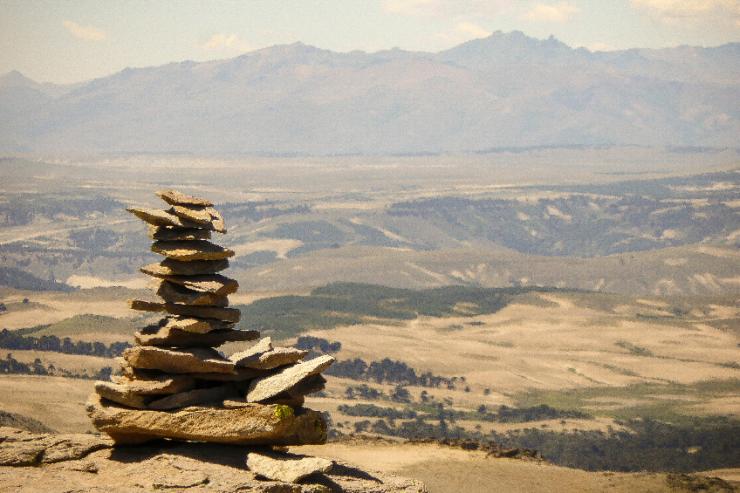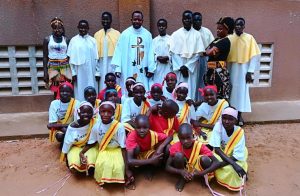The Nativity, a crossroads that unites the divine and the human.
The journeys and pilgrimages that people frequently make in the Andean countries include long journeys to meet other people, to respond to social, political and work responsibilities, etc.
However, you also walk a lot to go to celebrate holidays and special ceremonies. The routes are therefore long and reach various geographical places that are often unknown.
There are forms of itineraries that express a sort of sacredness because they have peculiarities such as the intersection of impetuous winds or mists that produce sudden changes in climate or other variables such as the passages between one mountain and another or particularly inaccessible locations.
Where these roads cross, one frequently encounters an apacheta, that is, a mound of stones placed one above the other as a sign of passage and the offering of travellers.
An apacheta means that it is necessary to pay attention to the space of the surrounding territory because it enables the revelation of a deeper connection with the mystery of life, and for this reason, every Andean person who passes by that place places a stone on the apacheta.
He also lays down some coca leaves and sprinkles a few drops of liqueur as a sign of gratitude for having reached that stage of the journey, and at the same time, as a request for permission to continue on the road.
The crossroads of these itineraries also represent a decision-making moment: which road to take? With what attitude should a person walk? Each apacheta is a crossroads or a meeting of different paths, and the ambiguity that characterizes them helps to connect with uncertainty and doubt because in fact there is no certainty about the road, only different options…
When I reflect on the mystery of the Nativity, of the incarnation of Jesus Christ, my mind and my feelings return to the image of the apacheta, a crossroads that unites the divine and the human: “Glory to God in the highest heaven and on earth peace to those whom he loves” (Lk 2:14).
The time-space of the Nativity, a true crossroads, offers us the opportunity to reflect in order to make important decisions: “Entering the house, they saw the child with Mary his mother, they fell down and worshipped him” (Mt 2:11). Which road must I take inspired by a God who becomes a man with the fragility of a new-born child? Given that God incarnates himself in human history so that we may achieve the fullness of life: with what attitude must we walk through history?
At Christmas, we must transform the crossroads into a meeting between different peoples who, by allowing themselves to be accompanied by the bond with the creation and with the Creator, are able to rediscover history as a possibility of life, in which one learns to dance even with the never-ending questions, but building a society in which everyone can live with dignity.
The symbol of the apacheta can be of help in inspiring us to experience Christmas as a meeting time for different itineraries, which allows us to leave aside what weighs us down; it helps us to share the profound meaning of the mystery of life and allows us to continue the journey in history as a Church allied with all peoples.
(Tania Ávila Meneses) – (Photo:123rf.com)







